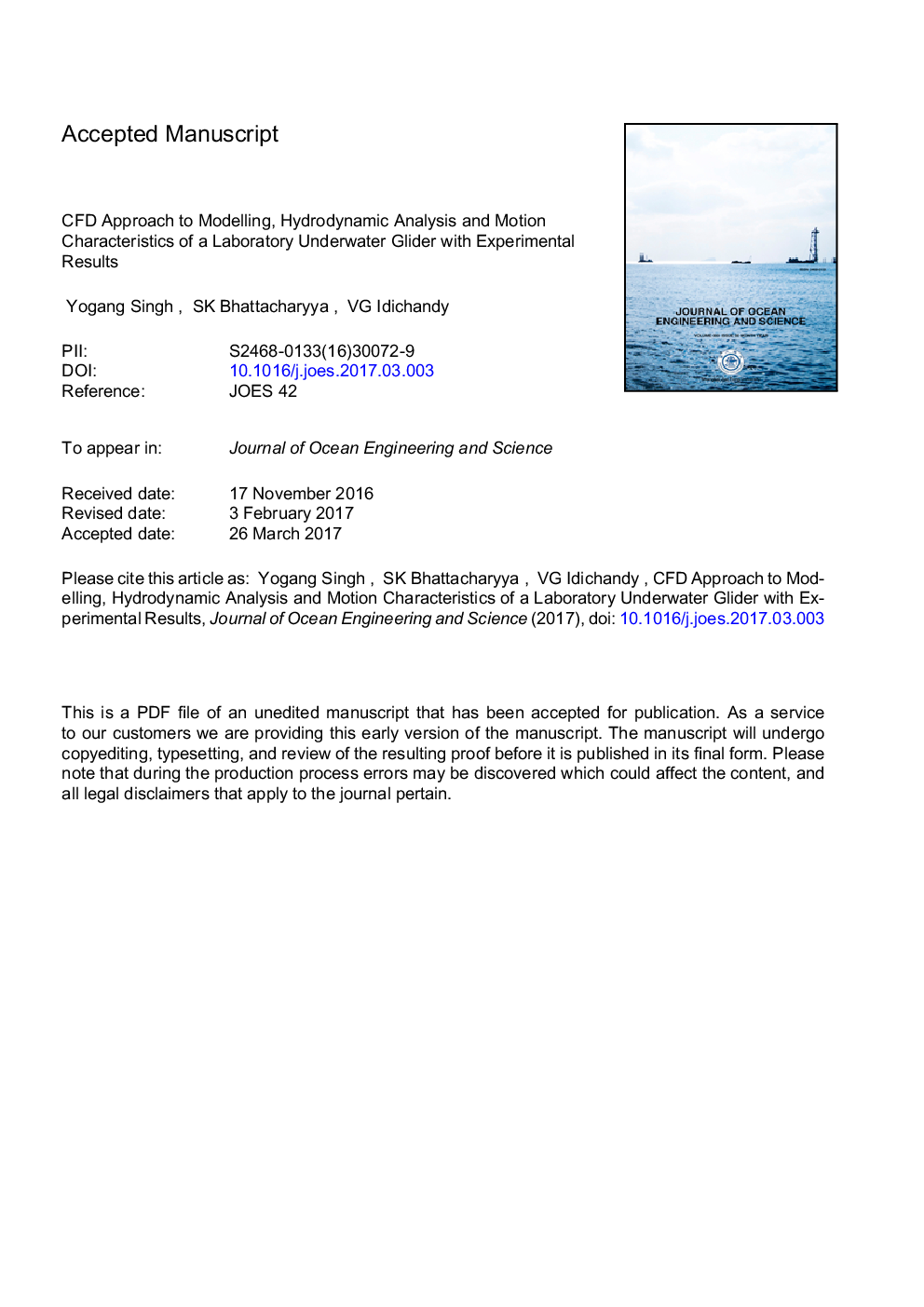| کد مقاله | کد نشریه | سال انتشار | مقاله انگلیسی | نسخه تمام متن |
|---|---|---|---|---|
| 7216686 | 1470219 | 2017 | 30 صفحه PDF | دانلود رایگان |
عنوان انگلیسی مقاله ISI
CFD approach to modelling, hydrodynamic analysis and motion characteristics of a laboratory underwater glider with experimental results
دانلود مقاله + سفارش ترجمه
دانلود مقاله ISI انگلیسی
رایگان برای ایرانیان
موضوعات مرتبط
مهندسی و علوم پایه
سایر رشته های مهندسی
مهندسی (عمومی)
پیش نمایش صفحه اول مقاله

چکیده انگلیسی
Underwater gliders are buoyancy propelled vehicle which make use of buoyancy for vertical movement and wings to propel the glider in forward direction. Autonomous underwater gliders are a patented technology and are manufactured and marketed by corporations. In this study, we validate the experimental lift and drag characteristics of a glider from the literature using Computational fluid dynamics (CFD) approach. This approach is then used for the assessment of the steady state characteristics of a laboratory glider designed at Indian Institute of Technology (IIT) Madras. Flow behaviour and lift and drag force distribution at different angles of attack are studied for Reynolds numbers varying from 105 to 106 for NACA0012 wing configurations. The state variables of the glider are the velocity, gliding angle and angle of attack which are simulated by making use of the hydrodynamic drag and lift coefficients obtained from CFD. The effect of the variable buoyancy is examined in terms of the gliding angle, velocity and angle of attack. Laboratory model of glider is developed from the final design asserted by CFD. This model is used for determination of static and dynamic properties of an underwater glider which were validated against an equivalent CAD model and simulation results obtained from equations of motion of glider in vertical plane respectively. In the literature, only empirical approach has been adopted to estimate the hydrodynamic coefficients of the AUG that are required for its trajectory simulation. In this work, a CFD approach has been proposed to estimate the hydrodynamic coefficients and validated with experimental data. A two-mass variable buoyancy engine has been designed and implemented. The equations of motion for this two-mass engine have been obtained by modifying the single mass version of the equations described in the literature. The objectives of the present study are to understand the glider dynamics adopting a CFD approach, fabricate the glider and its variable buoyancy engine and test its trajectory in water and compare it with numerically obtained trajectory in the vertical plane.
ناشر
Database: Elsevier - ScienceDirect (ساینس دایرکت)
Journal: Journal of Ocean Engineering and Science - Volume 2, Issue 2, June 2017, Pages 90-119
Journal: Journal of Ocean Engineering and Science - Volume 2, Issue 2, June 2017, Pages 90-119
نویسندگان
Yogang Singh, S.K. Bhattacharyya, V.G. Idichandy,